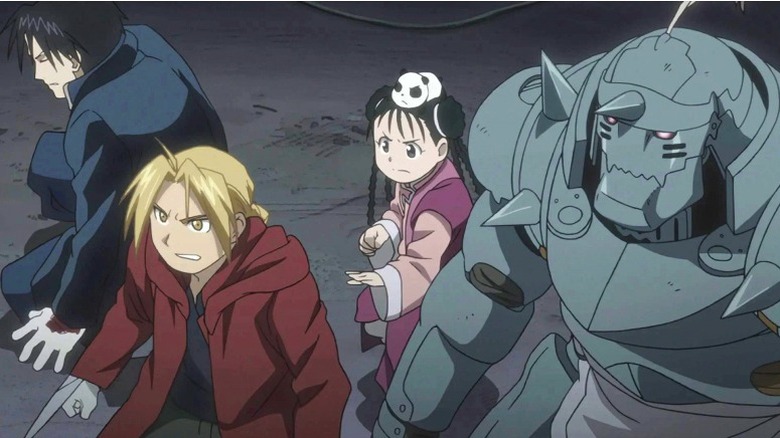ATLA's Creators Credit Anime's Long-Form Storytelling Style With Helping To Inspire The Show
As great homages to the beloved world of anime go, one can get no better than "Avatar: The Last Airbender." In 2005, the Nickelodeon show created by Bryan Konietzko and Michael Dante DiMartino blew audiences away with an immersive fantasy series unlike any other. Set in a fictional world where the population can manipulate the four elements, the titular last Airbender, Aang (Zach Tyler Eisen), learns to control all four to defeat a dictator.
Looking to create a love letter to the best anime shows and not just make a carbon copy, Konietzko and DiMartino set out to do something different. That something still resonates with viewers today. With fast-paced action sequences, fully developed lore, and larger-than-life villains, it is easy to say that the creators' pain-staking labors come to life.
When one makes a love letter, they have to go the extra mile. The creators didn't just want to make something that was old hat for American animation viewers. They wanted to implement techniques that made telling a consistent story even better.
Anime has perfected telling long stories
"Avatar: The Last Airbender" appeals to all walks of life. Children appreciate watching characters their age come into their own while other components appeal to adult, like the mature storylines that are woven throughout the narrative.
Bryan Konietzko and Michael Dante DiMartino also added a concept familiar to anime lovers. American audiences, however, may not be as accustomed to this form of storytelling.
"When we're talking about deep, long-form storytelling, we didn't create that," Konietzko said during an inside look at Avatar Studios. "It was something we as Western viewers, we were just craving that. If you were watching anime, that was just normal. If you were only exposed to American animation at that time, that probably felt pretty fresh."
Aang's destiny to master all the elements becomes even more complicated with the added pressure of defeating Firelord Ozai (Mark Hamill). This journey culminates after three seasons with an epic multi-episode battle. Once this conflict is resolved, the show is over. "Fullmetal Alchemist: Brotherhood" achieves something similar with its fulfilling conclusion.
In this anime, which is one of the most popular to date, the Elric brothers must find a way to get their bodies back while defeating the villain. The series is 64 episodes, with the finale being told over the course of several episodes; although, in-universe, this climax happens in one day.
If this is the gold standard to compare animation to, "Avatar" succeeds. Both series tell long-form stories with a climactic finale told over multiple episodes. Both also feature characters trying to achieve a personal goal on top of facing a major villain who threatens countless lives. Like "Fullmetal Alchemist: Brotherhood" and other anime, "Last Airbender" brings the heart to fans of animation and storytelling at large.

